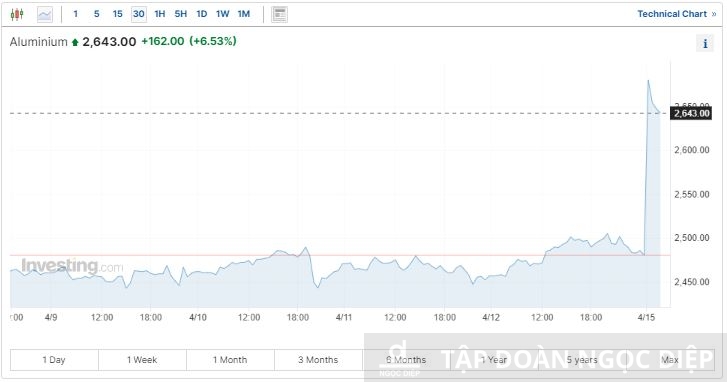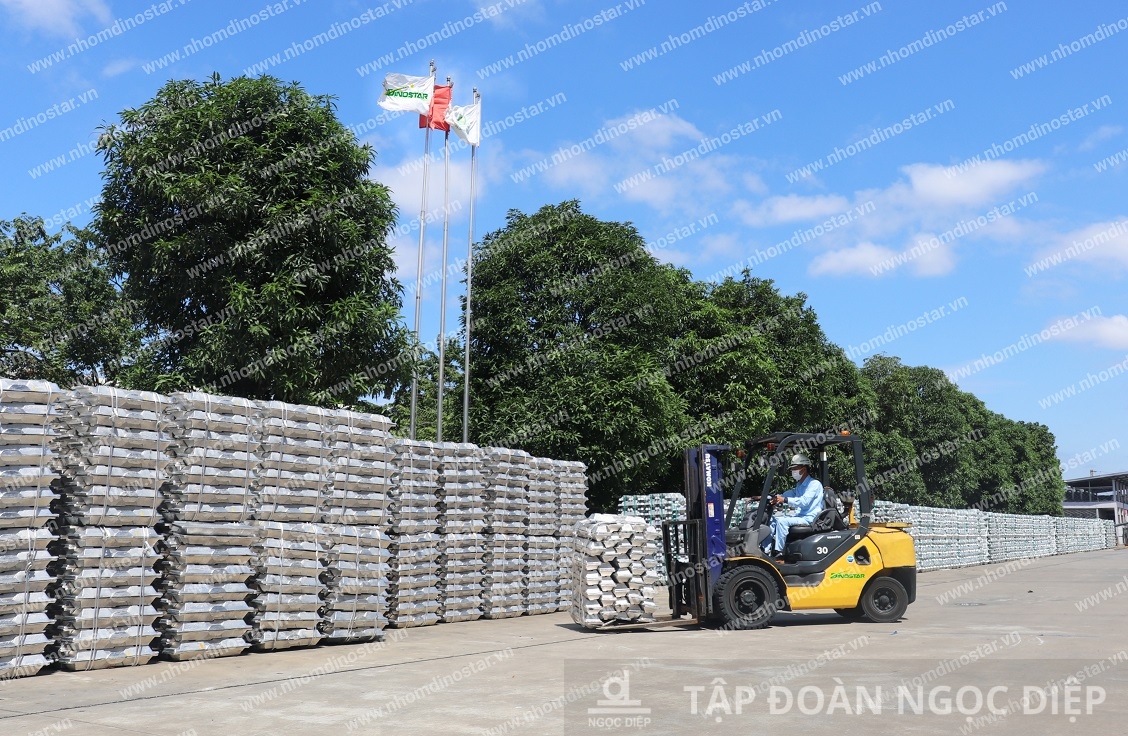High Aluminum Prices: Impact from Strong Demand in China and US Bans
High demand from various industries combined with import restrictions, aluminum trading from Russia, along with global supply constraints, has led to a significant increase in aluminum prices in the international market since the beginning of 2024.
Aluminum Prices Peak
At the close of trading on March 28th on the London Metal Exchange, the three-month aluminum price rose to $2,337.5 per ton, the highest level since the beginning of 2024. In the first half of April 2024, aluminum prices continued to rise and exceeded the $2,700 per ton mark, the highest level in nearly 2 years.

The aluminum trading price reached a point exceeding $2,700 per ton in April 2024 (Source: investing.com).
Supply Pressure from Bans and Production Cuts
According to official information from the US Department of the Treasury, on April 12th, the US and UK jointly issued two new regulations aimed at reducing Russia’s revenue from aluminum, copper, and nickel exports. This measure prohibits the import of aluminum, copper, and nickel originating from Russia into the United States and limits the use of these metals on global commodity exchanges and centralized derivatives trading. Metal exchanges such as the London Metal Exchange (LME) and the Chicago Mercantile Exchange (CME) will be prohibited from trading new aluminum, copper, and nickel from Russia. Russia is the world’s second-largest aluminum producer, so banning imports and restricting aluminum trading from Russia could lead to a shortage of supply in the international market, significantly impacting aluminum prices.
Additionally, investment research firm UOB Kay Hian has stated that aluminum inventories at the London Metal Exchange LME are relatively low, at around 549,000 tons by the end of 2023. At the same time, aluminum inventories in China are also only about 434,000 tons, with no significant imports and aluminum output negatively affected after production in Yunnan province was cut in the fourth quarter of 2023.

Supply Tightening Pressure on Aluminum Prices
Furthermore, on March 15th, the world’s 8th largest aluminum producer, Alcoa, announced a reduction in production at its Portland aluminum plant in Victoria, Australia, due to production instability. Production at this plant will decrease to about 75% of its total capacity of 358,000 tons per year. At the same time, Alcoa also officially announced the closure of the Kwinana alumina refinery in Western Australia in January 2024 due to difficult market conditions and outdated infrastructure. Both of these actions have led to a significant reduction in Alcoa’s aluminum production and put pressure on aluminum prices.
Increased Demand Growth from China
According to analysis from Citi Research, high demand for aluminum in solar energy projects and electric vehicles will help maintain high aluminum prices in China, the world’s leading aluminum consumer. In the first two months of 2024, solar installation projects in China generated 36.7 gigawatts of electricity, an 80% increase from the same period last year and exceeding market expectations. New electric vehicle sales in China reached 1.765 million units in the first quarter of 2024, up 34% from the same period last year. Both of these factors indicate a high demand for aluminum.

Citi Research forecasts that the renewable energy sector will be the main driver of aluminum demand in China in 2024.
Fields such as green materials and energy infrastructure, driven by China’s carbon emission reduction goals and pollution control efforts, will also contribute to increasing aluminum demand in the country.
Furthermore, the US Federal Reserve’s expected interest rate cuts may accelerate the global aluminum demand recovery. This is seen as a crucial factor in boosting aluminum prices in the world market.
Challenges for Domestic Aluminum Enterprises

Ngoc Diep Corporation proactively manages risks and enhances reserves to cope with aluminum price fluctuations in the international market (Image: Dinostar Aluminum Plant).
The global aluminum market strongly impacts the domestic aluminum market and aluminum manufacturing businesses. Dependence on imported raw materials makes domestic aluminum prices directly affected by international aluminum price fluctuations, leading to higher domestic aluminum prices. In addition to input cost pressures, domestic aluminum manufacturers also face price competition and market share from Chinese enterprises investing in Vietnam. To cope with these challenges, Ngoc Diep Corporation has proactively implemented risk management measures, increased input material reserves to reduce dependence on imports, and better cope with aluminum price fluctuations in the international market. These efforts have helped the Dinostar Aluminum brand of Ngoc Diep Corporation maintain its leading position in the domestic aluminum industry and ensure stable supply for the domestic market while maintaining business growth.










